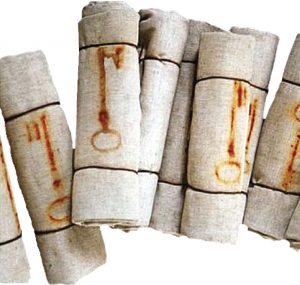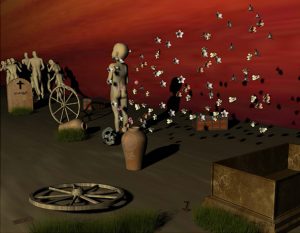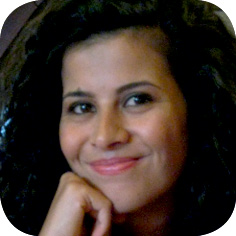“If you’d been born and raised in Palestine, you’d know that some people are born to suffer. And it never stops, for them. Not for a second. You’d know where real suffering comes from. It’s the same place where love and freedom and pride are born. And it’s the same place where those feelings and ideals die. That suffering never stops. We only pretend it does. We only tell ourselves it does, to make the kids stop whimpering in their sleep.”
– Gregory David Roberts, Shantaram
Where does Palestine exist? Does Palestine exist only in the memories of people who lost it and can never regain it? Does Palestine only exist anymore to serve as a voice that negates all the other voices? Has Palestine existed only to set the example of resilience, sumud, and resistance? Does Palestine exist only to serve as the example of suffering and injustice? Is Palestine the mecca of suffering and displacement?
Someone once said that when we read, we live in bodies that are not our own. To me, that’s one of the most beautiful images of reading that I’ve come across. It was only after I heard this that I started to relate to being both the Palestinian who lives under the brutal and unfair realities of today and the Palestinian of pre-1948 who had a very different experience of Palestine. I got to thinking that the same applies when we recall and document memories. Through the eyes of those who lived in this country pre-1948, Palestine has only one beautiful image that can never be replaced no matter where they are and no matter where they go – from those who have been dispossessed of their homes, lands, and belongings, to those who still carry the key to their homes and who still live with the dream of returning. Only through the documentation of the lives of those who have witnessed injustice can we, who were born in the aftermath of it all, learn about what life was like for Palestinians whose first experience of Palestine was not connected with their experience of growing up with the military occupation growing bigger every day.

William Faulkner once wrote: “The past is never dead. It’s not even past,” and I have to agree with him. The past is never a past as it transforms itself into the present that leads into the future. On the other hand, in a context where the past defines the future of generations to follow, the past is haunting. It weighs on the shoulders of every Palestinian, whether it refers to the days we reminisce over or to those nightmarish realities of dispossession and displacement.
When asked about what a memoir really is, the famous memoirist Sue William Silverman said: “Of much greater interest, and at the heart of memoir, is the story behind the story, the memoirist’s courageous ability to reflect upon the past, thus artistically recasting his or her experience into one that’s transformative.” Thus, a transformative reality would be the case in which I talk about the Palestine that I only know from the memory of others, fellow Palestinians who have seen a better, more wholesome picture. A memory is “the faculty by which the mind stores and remembers information.”**
Memories, memoirs, and Palestinians have always been intertwined. Palestinians have a lot of memories of better days and better realities, awful incidents and awful realities that cannot be erased. Palestinian memoir is a reflection of the history of displacement for people such as Edward Said, Mahmoud Darwish, and many others who were defined by a state of exile, who were born with the weight of what could have been. As a result, they wrote about Palestine from their memories as if being in exile created a constantly shifting reality that required them to stabilize and unify the Palestine they once witnessed. Through writing, one can start from the very beginning, from the time in which one’s mind started to grasp the idea of a country and what a country resembles, whether in childhood memories or in those times when home became distant and geographically far away.
We cannot go back to where we were; those places are not the same places that were taken away from us. However, it is through capturing those moments and the feeling of that time, it’s having been part of something that stretched so far back that we know that we are the accumulation and the result of those times and those realities. The wounds of the dispossession of millions of Palestinians will never heal but will always be present, hitting them every once in a while to remind them how deep the wound was and always will be, how immense the loss was and still is, how they were forced out of their own country.

I grew up with stories of a Palestine that no longer exists, a Palestine where Palestinians lived on their land before the occupation exiled them from their homes and lands. It was a Palestine that frankly doesn’t even remotely resemble the tormented, disfigured, occupied Palestine of today.
Within this context, at a time when attempts are made to disfigure the Palestinian identity, is it reasonable to talk about Palestinian identity – past and present? Is it logical to address the past, generations later? Can I speak with fondness about Palestine if I haven’t seen it? Can we be attached to something that has passed us by? Does history treat everyone the same way?
Today we witness commentators and decision-makers who talk sensibly about the real issues of justice and equality in Palestine, where reality is far from being sensible, far from being rational, and far from being fair! Does the voice of justice for Palestinians sound whimsical? Or is the taste of justice and equality for Palestinians considered an acquired taste?
If I were to write about the Palestine of today, the Palestine that I grew up in, it wouldn’t be as beautiful or as poetic as writing about the Palestine of the past. I grew up with the image of Palestine already tainted by occupation, already lacking color. The image wouldn’t be comprehensible anymore, with the settlements suffocating what’s left of Palestine; the picture wouldn’t be whole with the disfiguration of Palestinian cities within the West Bank and the complete alienation of Gaza. How would I begin to write about the Palestine of today? How would I be able to calculate its aesthetic value when it’s so emaciated by occupation that you wouldn’t believe that it’s the same Palestine that Mahmoud Darwish so eloquently described: “We have on this land that which makes life worth living.” However, no matter how people perceive it, Palestine is like coffee in all its forms – it can be black, it can be bittersweet, or it can be sweet. But no matter how you take it, it is something that wakes you up, and it is impossible to stay awake without it.
Palestinian generations have witnessed different versions of Palestine: Palestine under Ottoman rule, Palestine under British rule, Palestine under the Israeli occupation. Others have witnessed Palestine from afar, and some have witnessed it through the memory of others. Palestine is multigenerational, multidimensional, and multi-definitional. But no matter how people choose to view Palestine, it will always shine bright, always radiate the farthest and stand the highest once it is liberated from the hideousness of occupation.
*An unfortunate 15 minutes in Palestine
**R.C. Atkinson and R.M. Shiffrin, “Human Memory: A Proposed System and Its Control Processes,” Stanford University, 1968.


